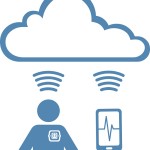A year ago, no one could have imagined that our world would fundamentally change in an instant. In every industry across the world, the pandemic has left its mark on how companies and employees will operate in the future. Healthcare is no different, but, for different reasons. Whether it’s video care, chat services or the use of asynchronous means, patients have been able to get provider feedback from a variety of sources. As we begin to return to our new normal, telehealth options will still be available, but many patients will trust a doctor’s in-person advice versus the recommendations provided via telehealth options. This means that post-pandemic, patients will revert back to convenient in-person care, especially when it comes to visits for new and undiagnosed issues that will need a point-of-care lab, vital signs and physical exams. There have been discussions around wearable technologies and their usage for video visits to garner data for vital signs. While there is a lot of potential, the time and money necessary from a provider’s side for the data they provide is still cloudy.
Now, while in-person will ultimately return to being the preferred option, that will depend on the patient’s access to healthcare and which channel best fits their needs. Since the onset of the pandemic, patients have been able to meet with their healthcare team through multiple channels, including text-only, video and in-person channels. With an increase in demand for each channel, significant improvements and strides have been made as it relates to telehealth and telemedicine. At ZoomCare, we continue to see a high demand for both our synchronous remote services, like VideoCare and ChatCare, and asynchronous services like filling out questionnaires that can be reviewed by a provider later. Since the onset of the pandemic, all of our providers have been trained to diagnose and treat hundreds of common concerns online. There will still be some hiccups because, like any new technology, it will take a level of understanding from both providers and patients before it becomes seamless. The systems that can present the relevant data better and turn that into guidance for patients will have a leg up. It will take time to perfect this technology. Our ChatCare product has facilitated thousands of visits and through all that data we have dialed in the guidance across our teams for consistency and quality.
As healthcare systems continue to evolve to fit the needs of patients, the real winners will be the systems that will provide a hybrid level of care. Both the patient and provider benefit from this as patients are directed to the right level of care to meet their needs, ultimately cutting out the excessive visits and tests for the patient and freeing up providers to better connect with patients. Additionally, providers have become accustomed to the alternate channels of care and, on a fundamental level, they are able to offer their services to those hard to reach places and populations. From our perspective, this is one of the biggest takeaways from the pandemic. More people have been provided access to care through video and virtual visits that they have never been able to receive previously. Increased access to care is a vital part of the vision to innovate the delivery of healthcare.
Mental health is a true passion for me, and the demand for its services has grown exponentially, partly due to a lowered stigma and improved awareness of its importance to a person’s overall health, and partly because of COVID-19’s impact on individuals and families. Behavioral health is unique in that the vast majority of assessments and treatment planning can be done, safely, over video and other channels, which makes it much more accessible to a larger population. As we move into the next year, providers need to consider how to integrate a person’s behavioral health in a holistic manner. If we’ve learned anything from this past year, it’s that efficiency and accuracy are essential for patient care. If a behavioral health team is not factoring in a patient’s physical condition, they are missing out on creating a complete and robust treatment plan. This can inadvertently impede the patient’s ability to reach a full recovery. As providers, we must remember why we wanted to become a medical professional; to help people take care of themselves, and give them the resources they need to take control of their own health.
COVID-19 has taught everyone so much, myself included. Using technology, it is important to push to provide patients the ability to receive the exact care they need, when they need it.







